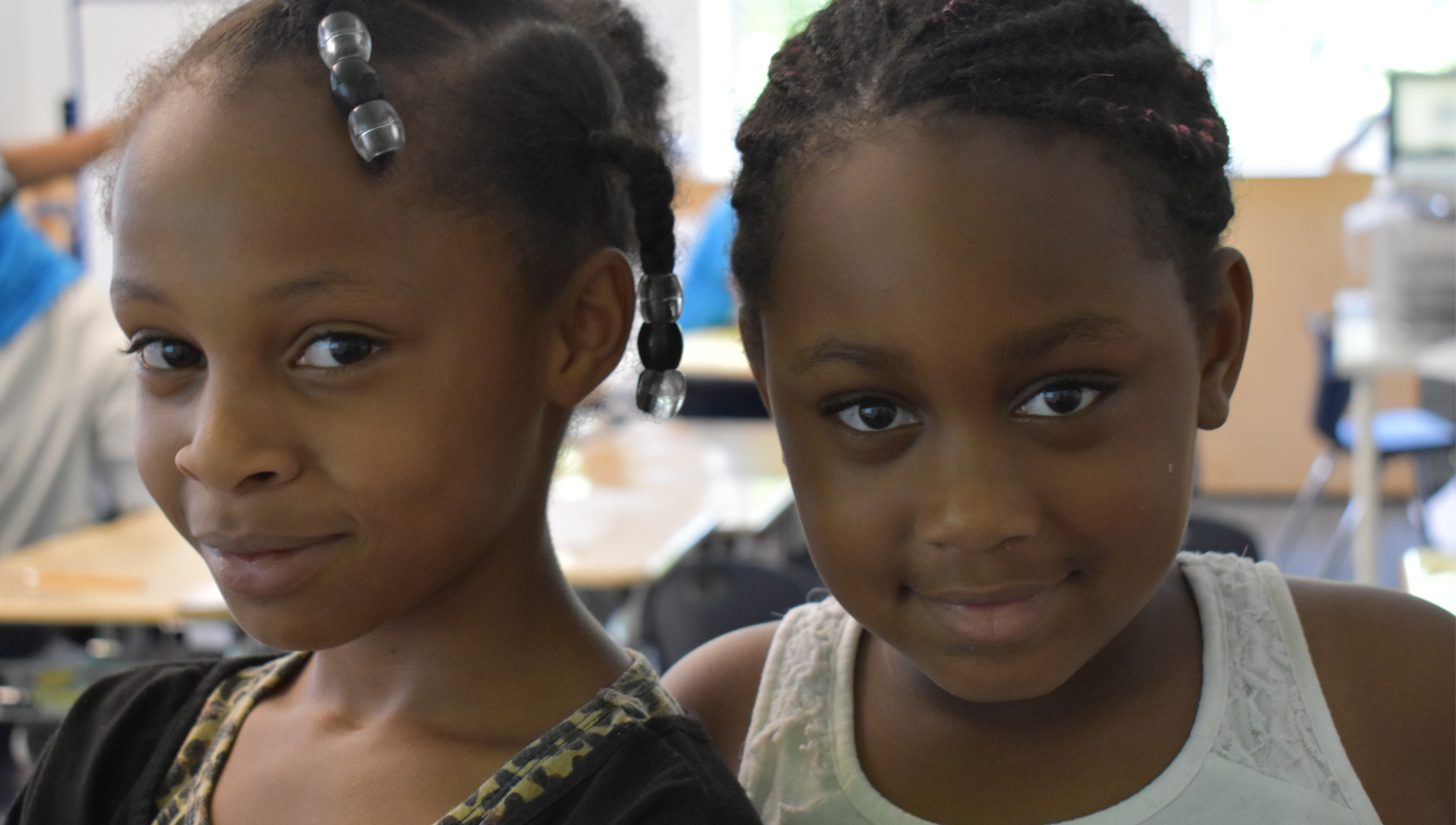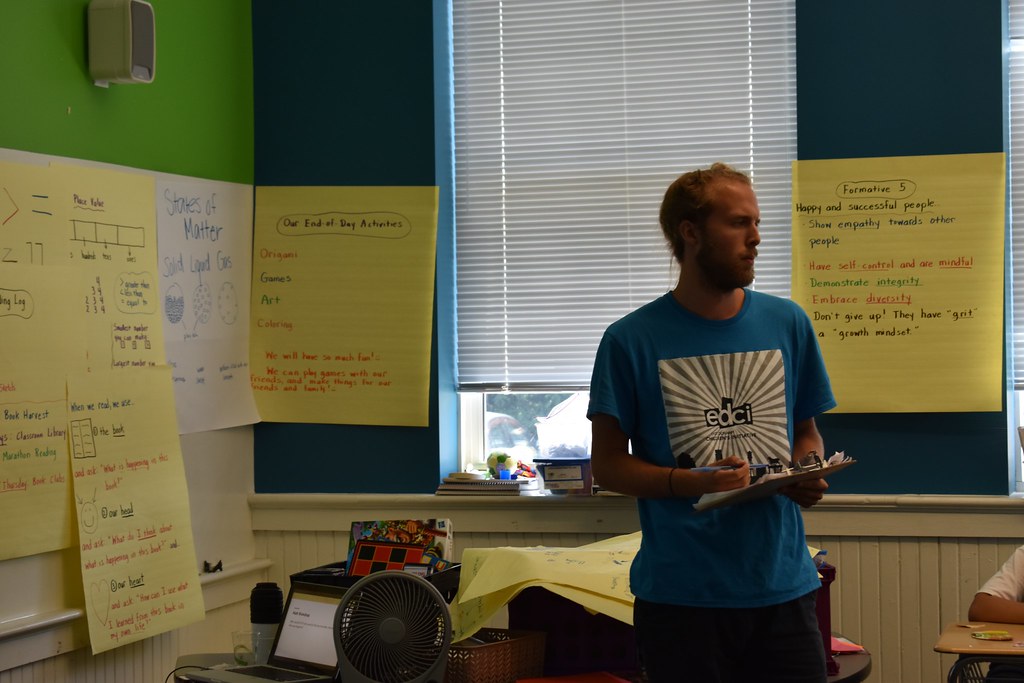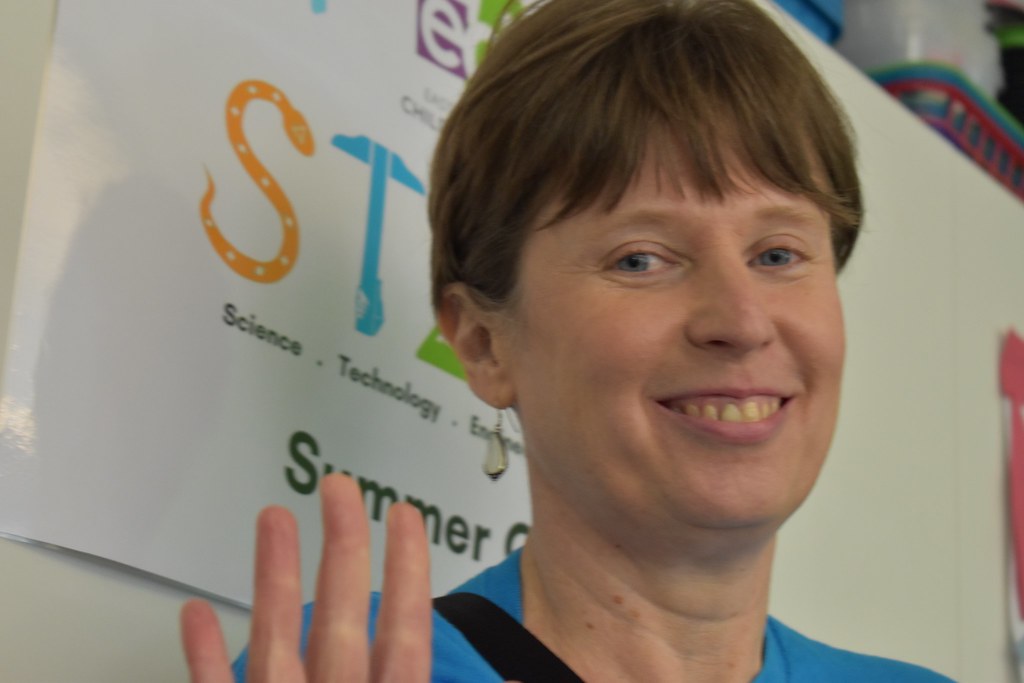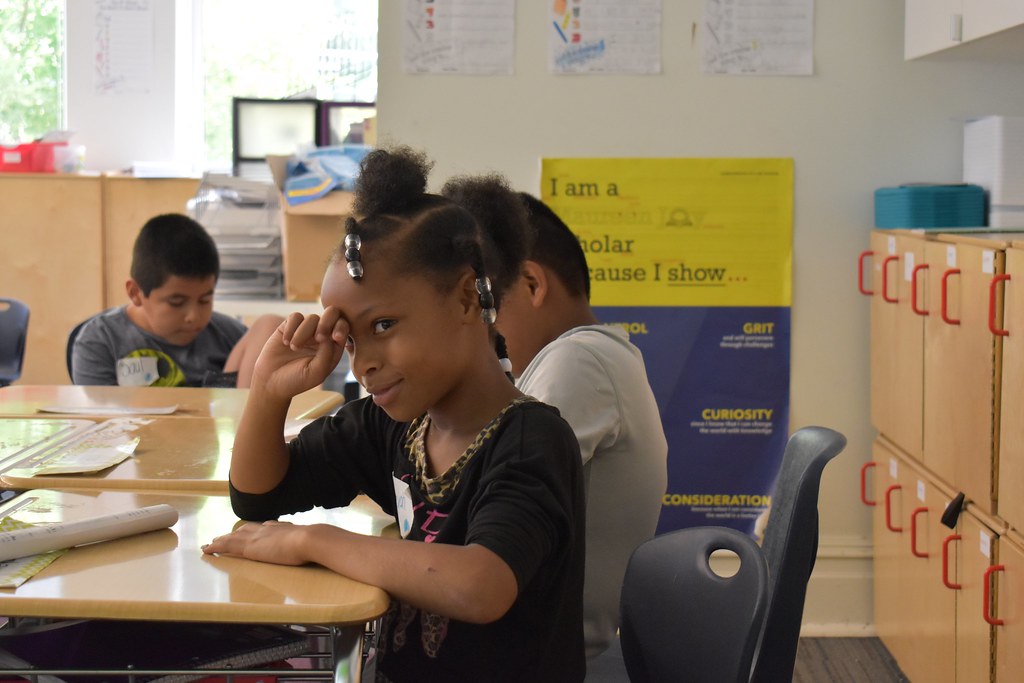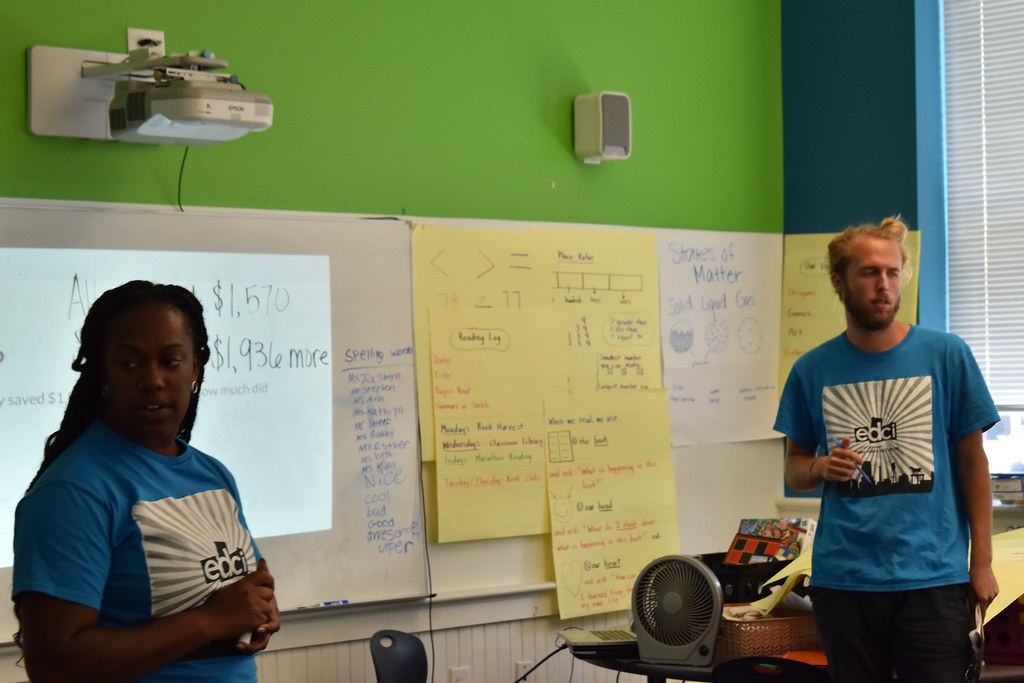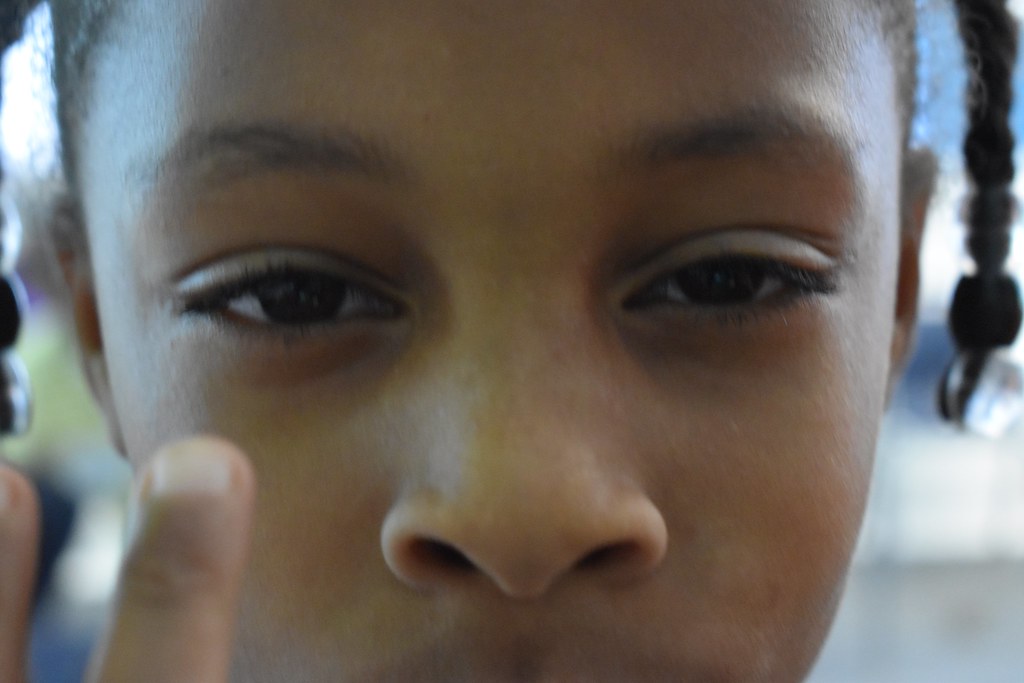How to Enhance Learning Over the Summer
A group from the NC State College of Education spent six weeks in June, July and August working to prevent summer learning loss among children in East Durham -- and learning how to be effective teachers.
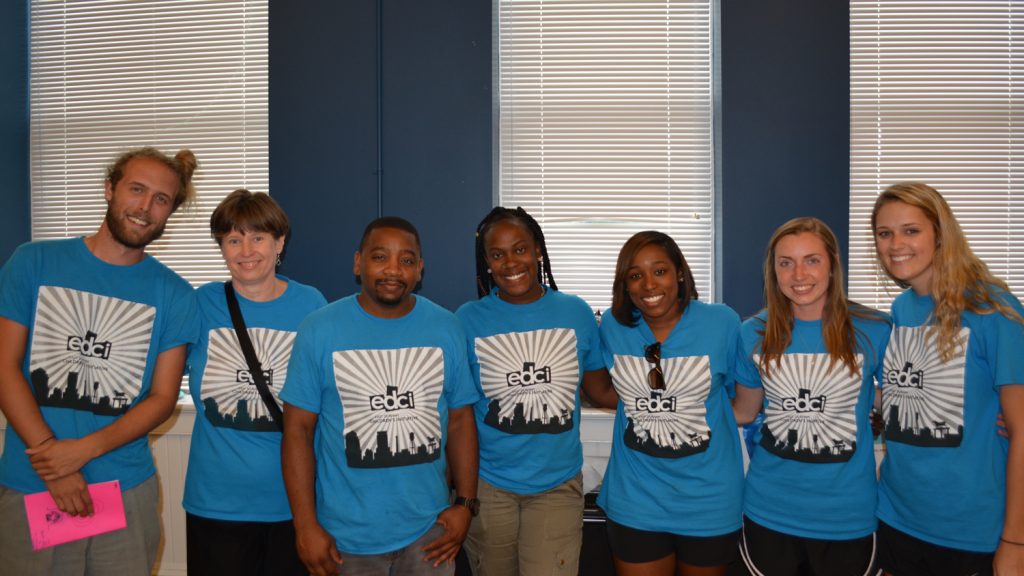
During the first week of the East Durham Children’s Initiative (EDCI) STEAM Summer Camp, Ann Harrington, a teaching associate professor of elementary and reading education at NC State helping lead the camp, asked a camper, Sarah*, what books she likes to read.
“I don’t want to read,” said Sarah, one of the 60 or so rising third, fourth, fifth and sixth graders attending the six-week camp that started in June. “I hate reading.”
“Then what are you interested in?” Harrington, a former elementary school teacher, asked Sarah.
“When I grow up,” Sarah said, “I think I want to work with hair and makeup.”
“That’s great!” Harrington said. “So if I bought you some books about hair and makeup, would you give them a try?”
“I don’t know,” Sarah said. “I don’t care.”
A few days later, Harrington brought Sarah several books about hair and makeup. And within five weeks, by the time the camp had its last day on Friday, Aug. 4, Sarah couldn’t stop reading. “Finding out what kids care about and putting things in their hands that relate to what they care about, makes a difference,” Harrington says.
Sarah’s new reading habits exemplify what Harrington and the other STEAM (science, technology, engineering, arts, and mathematics) camp organizers hoped to do this summer: To not only reduce summer learning loss for children who live in East Durham — the most economically distressed area in the city — but to also increase their motivation and advance their learning.
“We set out to operate a free summer camp that includes a more robust academic intervention for a sustained period of time that works for kids who need a smaller environment,” says Kim Fisher, EDCI’s director of community engagement and strategic partnerships. “Through Ann and her team, we did that, and it’s having an effect on the kids and community.”
*First name changed

Harrington recruited, trained and supervised five of the STEAM camp’s six teachers. Those five are College of Education students or alumni. [See 5 Things STEAM Summer Camp Teachers Learned That Effective Teachers Do]
One of them was Stephen McKinney, a Master of Arts in Teaching student whom Harrington taught last semester.
“When Dr. Harrington reached out to me, I started doing some research. EDCI is a really well-run organization that does good in the community. I was drawn to it right away,” says McKinney, who is preparing to teach ESL at a Title I school.
The East Durham Children’s Initiative is a nonprofit that provides a pipeline of services to low-income children and families living in a 120-block neighborhood in East Durham. They coordinate and provides services such as out-of-school-time learning programs, parent education and support, home visiting programs, a summer feeding program, and more. Through an AmeriCorps VISTA grant, EDCI started STEAM Saturdays in October 2016.
Over several Saturdays throughout the school year, EDCI gathered rising third through fifth graders to engage in hands-on activities and field trips that fostered the students’ interests in STEAM fields and careers. The Environmental Protection Agency, for example, led activities for students around air and water quality. The Triangle Land Conservancy gave them a tour of a natural preserve. And the Nasher Museum of Art taught them how to make murals out of large surfaces.
Last summer, EDCI piloted a four-week, half-day STEAM summer camp for neighborhood youth. Over 120 kids and 100 adult volunteers participated in STEAM workshops modeled off STEAM Saturdays. That exceeded expectations, says Nicky Charles, EDCI’s chief operating officer.
But they wanted to do even more. They set out to expand the camp this summer to six weeks and make it a full day. In the mornings, they would do hands-on activities and field trips that enrichment partners facilitated. In the afternoon, they would have an academic intervention block that included instruction in reading, writing and mathematics to reduce summer learning loss.
They asked Harrington to design that block. She had been working with EDCI leaders and principals of elementary schools in East Durham over the past two years to discuss ways to support the reading achievement of children who live in the area.
“A few of the schools in our service areas have very low proficiency rates in reading and mathematics, as low as 25 percent,” says Lauren Stephenson, EDCI’s development manager. “One of our goals is that students are academically proficient, which is why we offer so many out-of-school-time programs, particularly in the summer. We knew that in order to help students beat summer learning loss, we needed to up our game and provide a robust academic summer camp with STEAM themes and instruction in reading, writing, and mathematics.”
Why the focus on summer learning loss? Research suggests the achievement or opportunity gap has a lot to do with the learning loss that occurs over the summer, Charles and Harrington say. For children from economically advantaged households, summer is a time for acceleration of academic enrichment. They go to camps. They read. They write. Children who don’t have these opportunities may lose the skills and knowledge they acquired during the school year. There’s a multiplying effect from summer to summer, widening the gap.
“With children who live in poverty, too many people hold a deficit mindset. There’s this idea out there that children who live in poverty need a different type of instruction, like direct instruction or phonics-based instruction taught in isolation,” Harrington says. “I wanted to revert that and say: ‘All children deserve quality literacy and mathematics instruction.’”
Their Photos
In one of the classrooms during the East Durham Children’s Initiative STEAM Summer Camp, each student got to take at least one photo with a professional camera. These are some of their photos.
“Children learn to read by reading. Children learn to write by writing. And children learn to be mathematicians by engaging in mathematical thinking and problem solving,” Harrington says. This is her philosophy, and it infused the camp’s instruction.
Every day the STEAM teachers read to the students. The students also read on their own while teachers conferenced with them to provide vocabulary, comprehension and word identification support as needed. And students selected three books each week that the Book Harvest donated that they could read at camp and then take home to keep.
Some days students stood in front of the class to talk about the books they read through an “Author’s Chair” structure.
“We didn’t know how that would go,” says Lilly Smithdeal, a rising senior in elementary education and a STEAM camp teacher. “But we actually had to encourage them to wrap up.”
Each student also participated in book clubs with the teachers, Harrington and EDCI staff. They selected the books to read from a collection that addresses complex topics about interests and experiences they could relate to, like Laura Resau’s “Star in the Forest,” which is about a family that immigrated from Mexico to Colorado.
The students also spent every day writing, with a focus on poetry. Students wrote “I am from” poems, for example.The kid who loves seafood wrote “I am from shrimp and lobster.” A girl wrote, “I am from my twin.”
“The kids begin to see themselves as writers,” Smithdeal says.
These exercises were also a reflection of the holistic approach the teachers took toward the curriculum and instruction. “We look at our students as people, not just students,” Harrington says.
The teachers wove the Formative Five into their instruction to further create a positive classroom community. The Formative Five are the five primary characteristics of people who are happy and successful: empathy, self-control, integrity, embracing diversity and grit.
The first activity every day after lunch related to one of those traits. One time, for example, they read a quote about grit by Carol Dweck, the Stanford professor who originated the concepts of fixed mindset and growth mindset. Then the students wrote about a time when they had made a mistake and learned from it. Some shared what they wrote out loud.
Through the activities, the teachers learn more about their students and the students learn about each other; they engage in emotional and social learning. One afternoon, for example, during a mathematics lesson, the rising third graders built bridges out of K’NEX in small groups to also practice teamwork.
“Many of the kids we work with are not just struggling with reading or solving math problems; many are also struggling with relating to their peers and with adults,” Fisher says. “In addition to providing math and literacy instruction, we wanted to integrate emotional and social learning into the camp.”
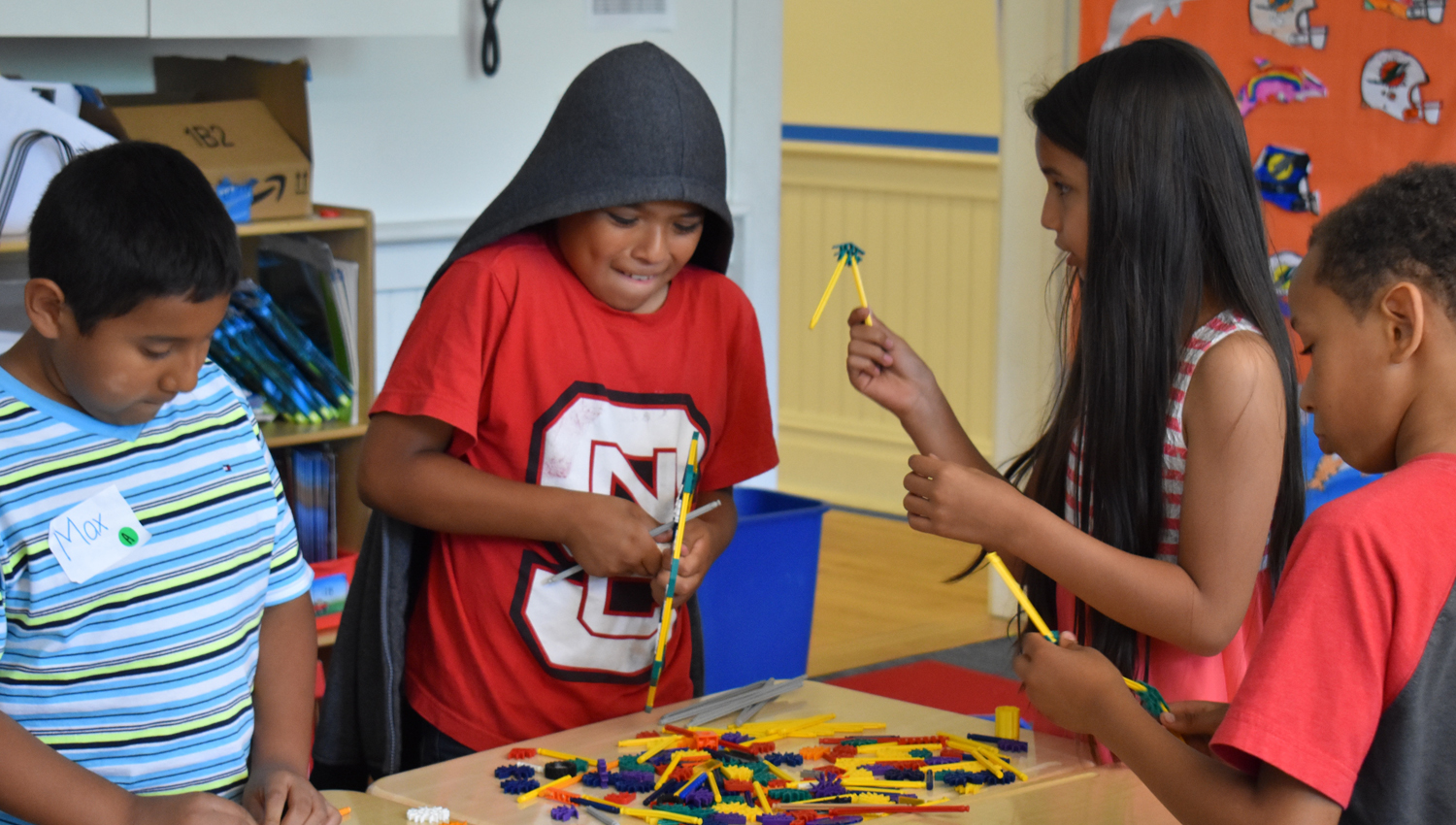
Jasmyn Jones is a second-year student in the College of Education’s Master of Arts in Teaching in the elementary education program. She spent over two hours on the road each weekday to drive between High Point and the Maureen Joy Charter School in East Durham, where the STEAM camp was held.
Despite the drive, she applied to teach at the camp because she wanted more teaching experience. “Being challenged helps you to grow professionally,” she says. She also wants to work in a school that serves kids like the ones STEAM camp serves.
“When a student comes into your classroom, they bring their outside circumstances with them. Many of the children we work with are plagued by issues they can’t control, like food insecurity,” Jones says. “This camp provides support and helps show kids that you are more than your circumstances. They are seeing examples and getting enrichment opportunities they may not get anywhere else.”
The camp was also an opportunity to provide NC State College of Education students, especially those interested in working in high-poverty schools, a chance to gain a meaningful teaching experience.
That’s another reason why McKinney joined the STEAM summer camp teaching team, he says. “I want to be a good teacher for students who need it the most. I’m learning more about how to be that for them.”
The first week of camp, for example, McKinney says he yelled, yelled and yelled to try to get the attention of his students. That didn’t work well. He asked Harrington for advice. “You have to remain positive,” she told him.
He started to talk to his class in a calm voice. If a student would not respond, he would pull the students aside, talk to them one-on-one, ask them what was going on, and listen. “It’s amazing the effect that can have,” he says.
Sheena Pitts ’17, another STEAM camp teacher, was reminded how not every classroom is the same. She student taught this past spring and is preparing to begin her first year of teaching at Bugg Elementary School in Raleigh. She thought during her student teacher experience that she had learned how to set up a classroom, manage student behavior, and execute lesson plans.
But she realized early on that the students she was teaching in East Durham had different needs than those she student taught. She had to alter her behavior based on the classroom in front of her that day.
“Sometimes there are things happening at home that the students bring to the classroom,” she says. “And sometimes something we’ve planned that day just isn’t going to work for them. You have to go with the flow and address the students’ needs first.”
Delaina Hawkins, a rising senior in elementary education major who taught alongside Pitts at the STEAM camp, adds: “Just understanding the traumas, connecting with the family, and knowing what’s going on in our students’ lives can help us better show we care and make us more aware of how every action matters. And those things aren’t always negative.”
One July day a student in the rising fourth grade was excited. Really excited. But Hawkins was not concerned. Because of EDCI staff, she knew it was his birthday.
In another situation, a student who was facing challenges at home was having a difficult day in camp. The first time it happened, the teachers pulled him aside to talk with him about what was happening. They explained that he may need to leave the classroom to “take a break” if he was not able to follow directions in their classroom.
The behavior happened again. The teachers had to follow through. “I’m so sorry,” the boy said. “Do you still love me?”
“Of course,” she said. He started crying. Hawkins let him step outside the classroom for a moment. When he returned, he gave Hawkins a hug and told her: “Thanks for still loving me.”
5 Things STEAM Summer Camp Teachers Learned That Effective Teachers Do
In addition to designing the curriculum for the East Durham Children’s Initiative STEAM Summer Camp, Teaching Associate Professor Ann Harrington supervised and supported the camp’s six teachers — five of whom are College of Education students and a May 2017 graduate. The sixth is a veteran Durham educator, Tavaris Adams.
The five with ties to the college share what they learned about what it means to be an effective teacher.

Get to know the whole child.
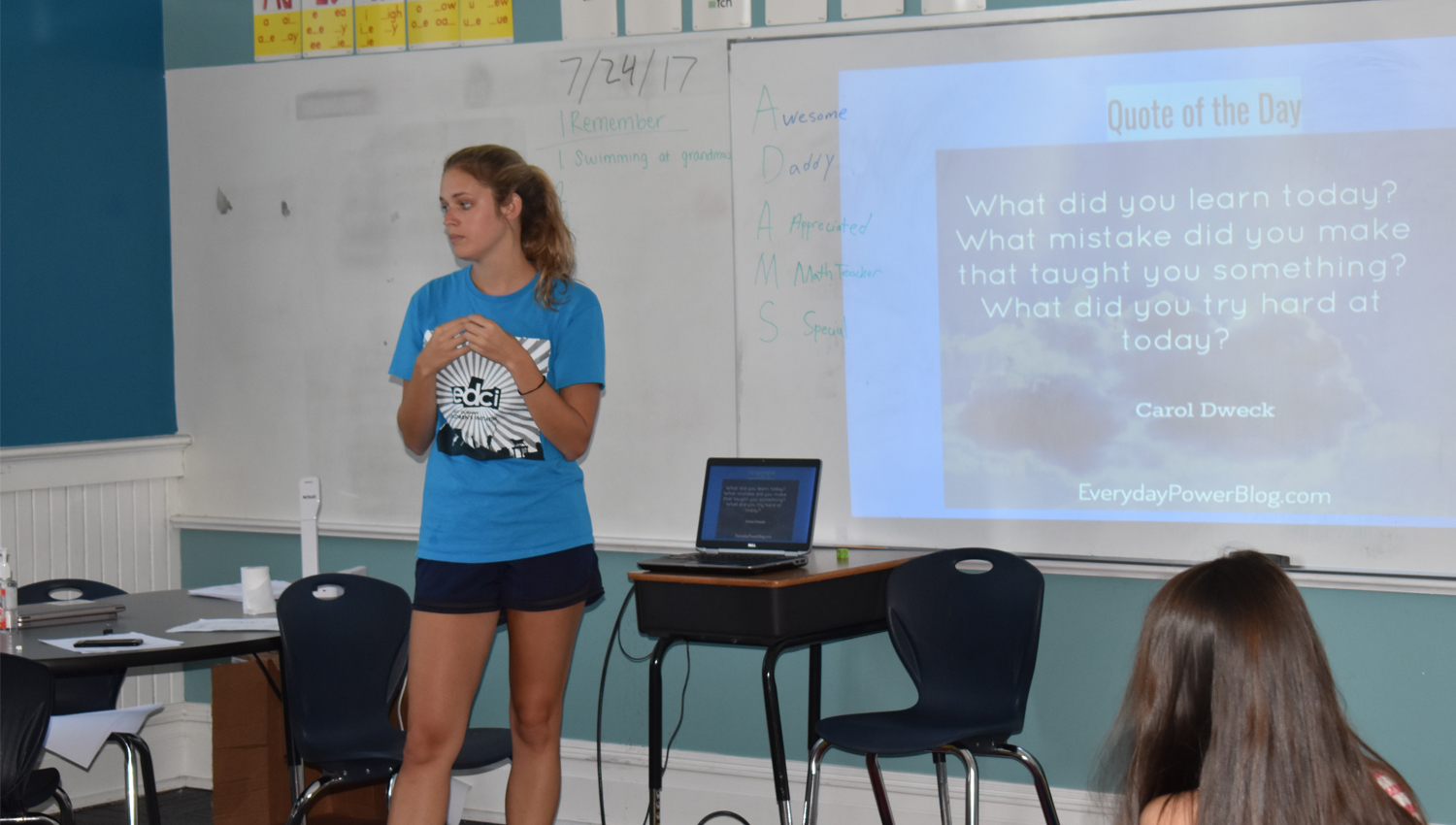
Go beyond academics.
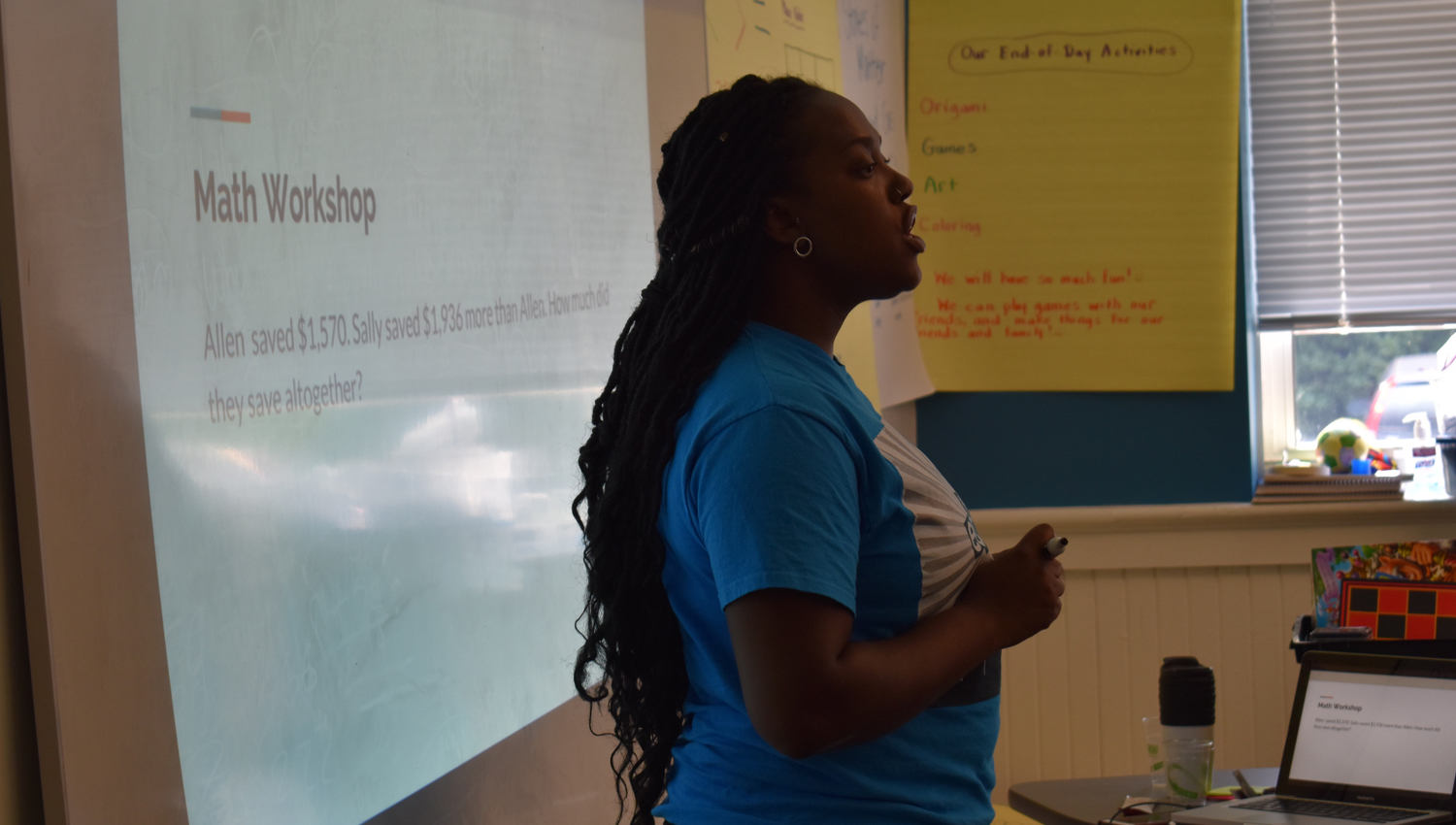
Consider the students’ interests.
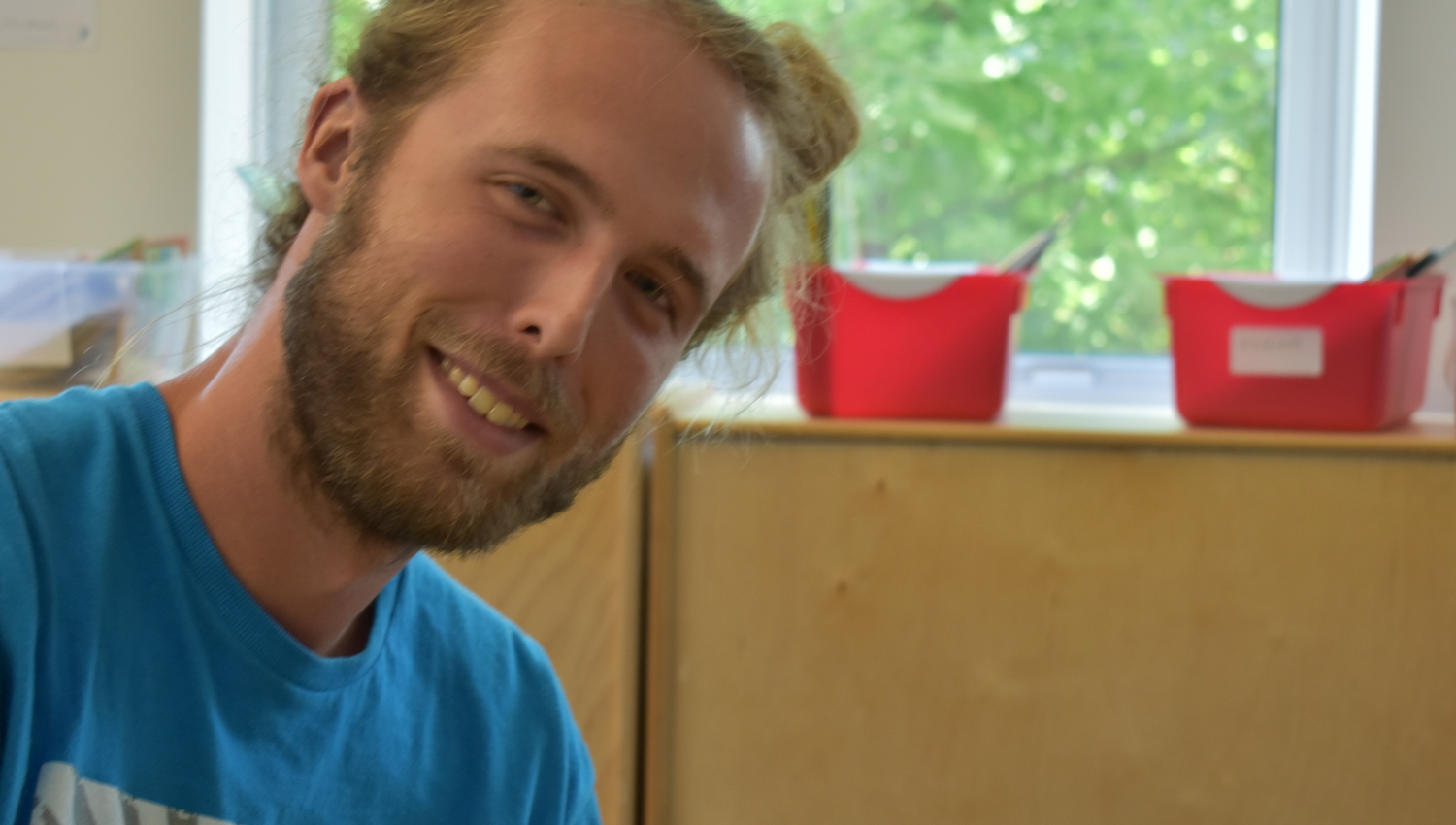
Hold the same high standard for all students.
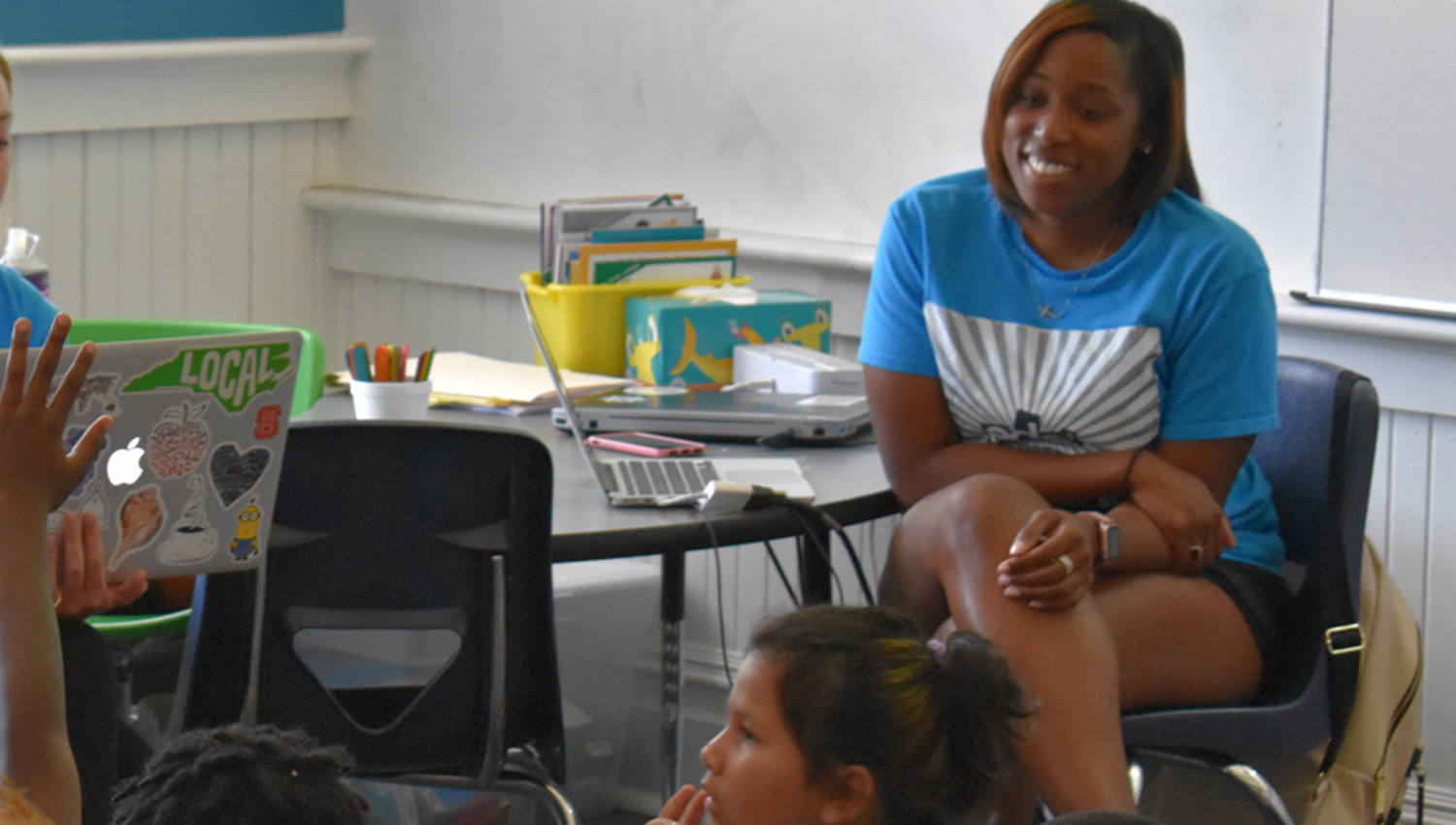
Remember every class is different.
